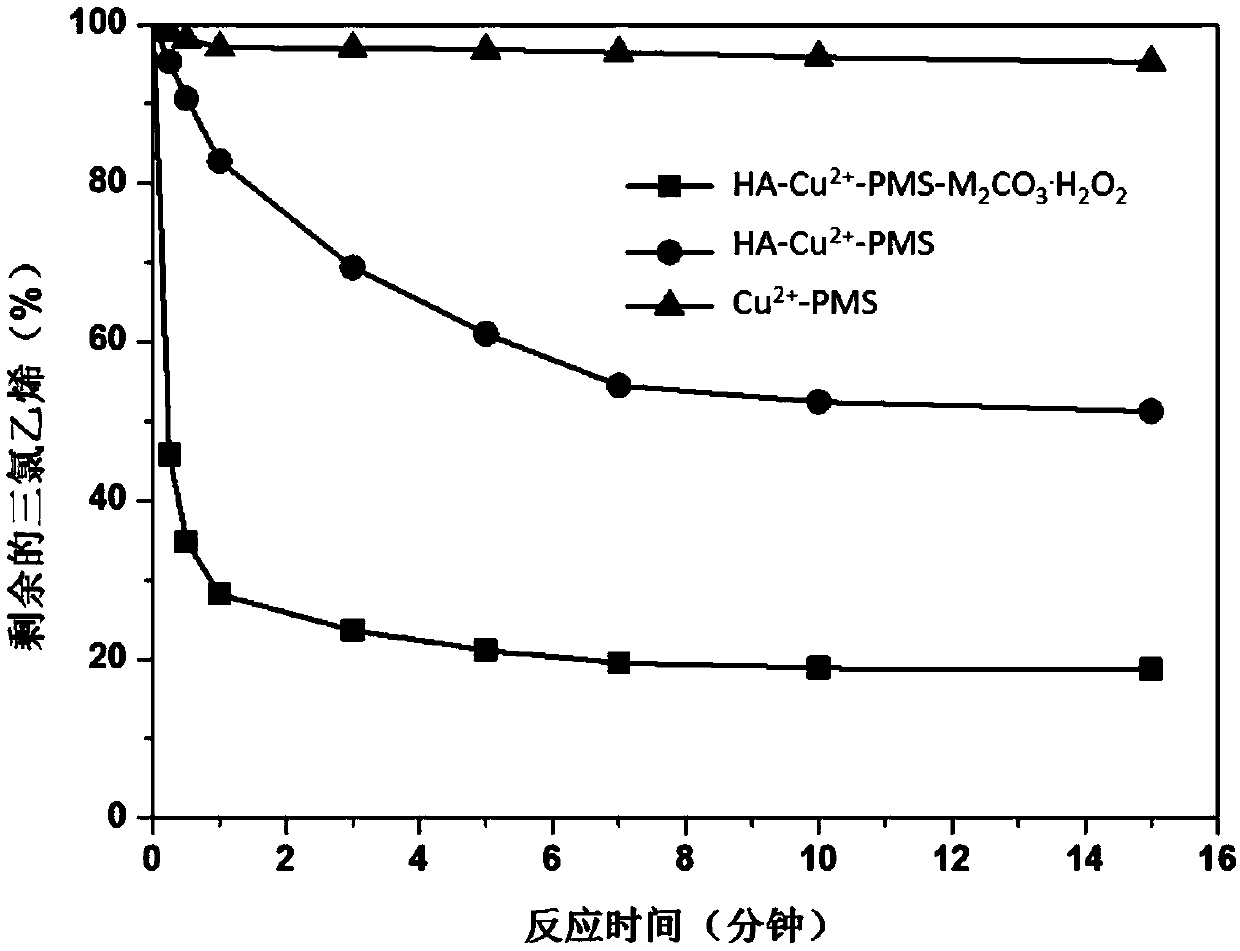Method for removing organic pollutant in water
A technology for removing organic pollutants and water, applied in the field of water treatment, can solve the problems of low removal efficiency of organic pollutants, slow free radical generation, narrow pH trial range, etc., and achieves low one-time investment cost and simple and easy operation. , a wide range of effects
- Summary
- Abstract
- Description
- Claims
- Application Information
AI Technical Summary
Problems solved by technology
Method used
Image
Examples
Embodiment 1
[0022] Use hydrochloric acid to adjust the initial pH value of the water body to be treated whose organic pollutant is trichlorethylene to 7, then add hydroxylamine hydrochloride, potassium persulfate, sodium percarbonate and copper sulfate in order in the water body to be treated, The molar concentration ratio of trichlorethylene, hydroxylamine hydrochloride, potassium persulfate, sodium percarbonate and copper sulfate is 1: 25: 25: 25: 0.5; the final water temperature is 25 ℃ of conditions, stirring reaction 15min, and in 0.5, 1 , 3, 5, 7, 10, and 15 minutes, measure the remaining amount of trichlorethylene.
Embodiment 2
[0029] Use perchloric acid to adjust the initial pH value of the water to be treated with the organic pollutant dye methyl orange to 6, and then add hydroxylamine hydrochloride, sodium persulfate, potassium percarbonate and copper perchlorate in sequence to the water to be treated , the molar concentration ratio of the dyestuff methyl orange, hydroxylamine hydrochloride, sodium persulfate, potassium percarbonate and copper perchlorate in the water body to be treated is 1: 400: 500: 100: 10; the final water temperature is under the condition of 40 ℃, stirring The reaction was carried out for 10 minutes. After the reaction, the remaining amount of the dye methyl orange in the system was measured, and the remaining amount of the dye methyl orange was measured to be 15%.
Embodiment 3
[0031] Use sodium hydroxide to adjust the initial pH value of the water body to be treated with dichlorophenol as the organic pollutant to 9, then add hydroxylamine hydrochloride, ammonium persulfate, ammonium percarbonate and copper nitrate to the water body to be treated in sequence, and the water body to be treated The molar concentration ratio of trichlorethylene, hydroxylamine hydrochloride, ammonium persulfate, ammonium percarbonate and copper nitrate in the water body is 1:10:100:10:5; the final water temperature is 40°C, stirring and reacting for 30 minutes, and according to the time , measuring the remaining amount of dichlorophenol in the system, the measured remaining amount of dichlorophenol is 17%.
PUM
 Login to View More
Login to View More Abstract
Description
Claims
Application Information
 Login to View More
Login to View More - R&D
- Intellectual Property
- Life Sciences
- Materials
- Tech Scout
- Unparalleled Data Quality
- Higher Quality Content
- 60% Fewer Hallucinations
Browse by: Latest US Patents, China's latest patents, Technical Efficacy Thesaurus, Application Domain, Technology Topic, Popular Technical Reports.
© 2025 PatSnap. All rights reserved.Legal|Privacy policy|Modern Slavery Act Transparency Statement|Sitemap|About US| Contact US: help@patsnap.com

